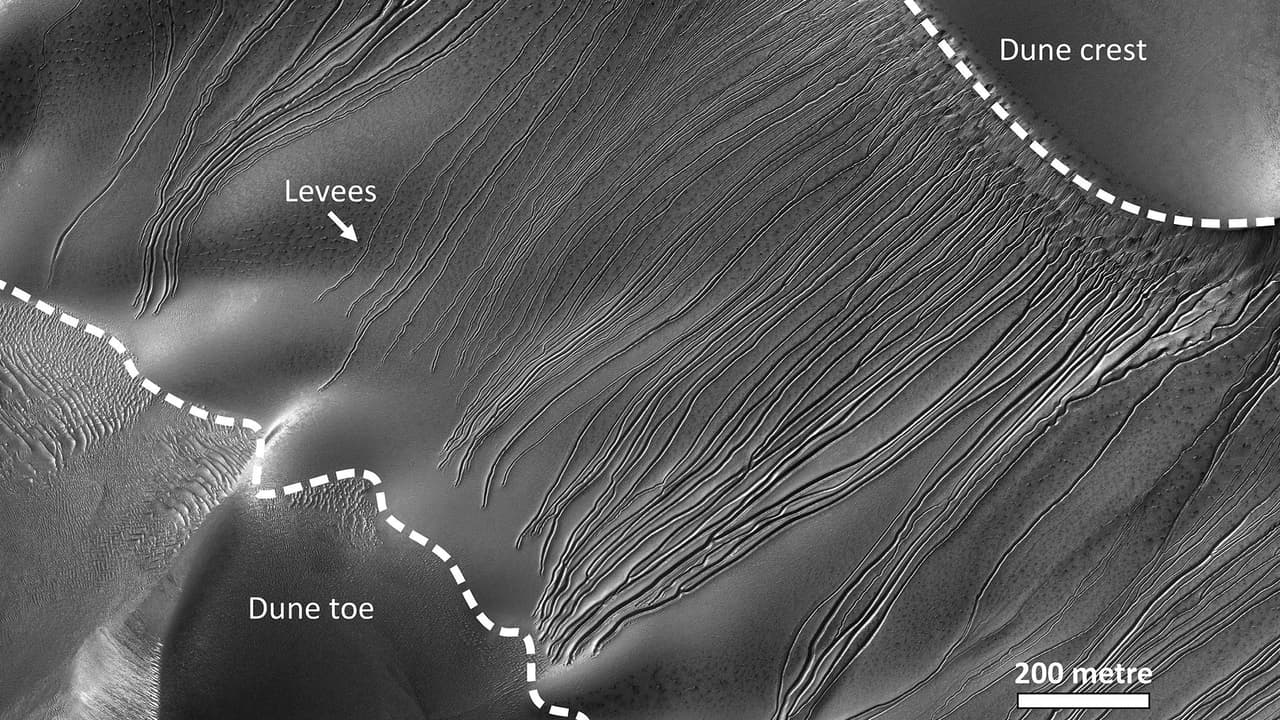Scientists reveal that Mars’ mysterious gullies are carved by CO₂ ice blocks. As the ice sublimates and slides downhill, it blasts sand and forms trench-like gullies, helping explain the planet’s unusual dune landscapes.
For years, scientists have puzzled over the unusual gullies etched into Martian dunes. Could they hint at past life or liquid water? Earth scientist Lonneke Roelofs of Utrecht University has uncovered a surprising answer: the gullies may be carved entirely by blocks of frozen carbon dioxide (CO₂ ice). Her research appears in Geophysical Research Letters.
Laboratory experiments recreate Martian processes
Roelofs and her team replicated Martian conditions in the lab, dropping CO₂ ice blocks onto sand slopes. “It felt like watching the sandworms in Dune,” she said. The ice slides, sublimates (turns to gas), and in the process, blasts the sand around it, carving long, trench-like gullies with ridges on each side — almost identical to those seen on Mars.
Sublimation: the explosive mechanism
During Martian winter, temperatures drop to around –120°C, allowing CO₂ ice to accumulate on dunes. When spring arrives, the sun warms the ice and the underlying sand, causing the ice’s underside to rapidly sublimate. The resulting gas pressure makes the ice appear to “explode,” propelling sand outward and enabling the ice block to dig into the slope. As the ice continues to vaporize while sliding downhill, it carves long, winding gullies.
Insights from the Mars chamber
Roelofs, together with master student Simone Visschers, used the Mars chamber at the Open University in Milton Keynes, England, to simulate dune slopes under Martian conditions. By adjusting slope angles and dropping CO₂ ice blocks, they observed the exact burrowing and trench formation seen in Martian gullies, confirming their hypothesis.
From ice formation to gully creation
CO₂ ice layers form across dune surfaces in the southern hemisphere of Mars, sometimes reaching 70 cm thick. When temperatures rise, blocks break off and slide down slopes, leaving behind hollows and ridges as the ice fully sublimates.
Why studying Mars matters
Mars fascinates scientists because it is our nearest rocky neighbor within the Sun’s “green zone,” where liquid water could exist — a key factor for life. Studying how Martian landscapes evolve offers insights not only into alien geology but also into processes that can shape Earth-like environments.
